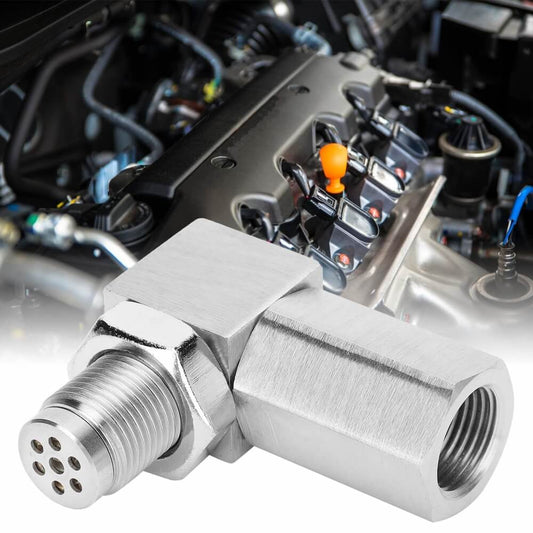What does an o2 sensor spacer do?
Share
FULL REVIEW- MINI CATALYTIC CONVERTER/02 SENSOR FIX..PASS INSPECTION P0420, P0138, P0141, P0430
In the complex mechanical world of automobiles, the oxygen sensor spacer (O2 Sensor Spacer) may not be the most eye-catching component, but it plays a crucial role in the exhaust system, especially during exhaust system modifications or when facing issues related to the catalytic converter. This article will delve into the working principle, importance, and value of the oxygen sensor spacer in various application scenarios.

Core Responsibilities of the Oxygen Sensor
First, let’s review the basic responsibilities of the oxygen sensor. As the "scout" of the engine management system, the oxygen sensor is responsible for real-time monitoring of the oxygen content in the exhaust and transmitting this vital information to the Engine Control Unit (ECU). Based on the feedback from the oxygen sensor, the ECU precisely adjusts the fuel injection rate to ensure that the engine operates at the optimal air-fuel ratio, thereby optimizing combustion efficiency, reducing exhaust emissions, and improving fuel economy.
Background of the Oxygen Sensor Spacer's Inception
However, in certain cases, such as exhaust system modifications, removal of the catalytic converter, or failures, the oxygen sensor may receive abnormal signals. This is usually because the changes in exhaust flow expose the sensor to a higher concentration of oxygen, misleading the ECU into believing that there is an issue with the exhaust system, thus triggering the Check Engine Light (CEL). At this point, the oxygen sensor spacer becomes the key to solving the problem.
Working Principle and Advantages
In simple terms, the oxygen sensor spacer is a connecting device located between the oxygen sensor and the exhaust system, and its functions can be summarized as follows:
1. Optimizing Positioning: By adjusting the installation position of the oxygen sensor, the spacer reduces the sensor's direct exposure to high-temperature, high-speed exhaust flow, thereby minimizing reading errors caused by changes in exhaust conditions. This helps the ECU obtain more accurate oxygen concentration data, thus maintaining normal engine operation.
2. Simulating Catalytic Converter Effects: Some advanced oxygen sensor spacers are equipped with mini-catalytic materials that can partially mimic the functionality of a catalytic converter. This is particularly important for car owners who remove the catalytic converter for performance enhancement, as it helps balance the relationship between performance and emissions, allowing the vehicle to pass emission tests.
3. Stabilizing Data Output: The temperature and pressure fluctuations in the exhaust system can interfere with the normal operation of the oxygen sensor. The presence of the spacer acts like a barrier, reducing the impact of these fluctuations on the oxygen sensor, resulting in more stable and reliable data output and extending the sensor's lifespan.
Application Scenarios and Value
The application scenarios for oxygen sensor spacers are broad, including but not limited to:
- Exhaust System Modifications: For car owners pursuing extreme performance, exhaust system modifications are common. In this case, installing an oxygen sensor spacer ensures that the modified exhaust system does not inadvertently trigger the engine fault light, thereby safeguarding the normal operation of the vehicle.
- Catalytic Converter Issues: Whether due to the removal, aging, failure, or replacement of the catalytic converter, the oxygen sensor spacer can provide effective solutions. It not only simulates part of the catalytic converter's function but also reduces the emission problems caused by catalytic converter issues.
- Resolving Fault Code Issues: When a vehicle displays exhaust system-related fault codes, such as P0420, installing an oxygen sensor spacer often quickly resolves the problem, sparing the car owner from the hassle of frequently illuminated engine fault lights.
Conclusion
In summary, the oxygen sensor spacer is an indispensable guardian of the automotive exhaust system. By optimizing the working environment of the oxygen sensor, simulating the function of the catalytic converter, and stabilizing data output, it provides effective solutions for car owners dealing with exhaust system modifications, catalytic converter issues, and fault code troubles. For car enthusiasts who love modifications and seek an enhanced driving experience, choosing a suitable oxygen sensor spacer is undoubtedly a wise decision.





